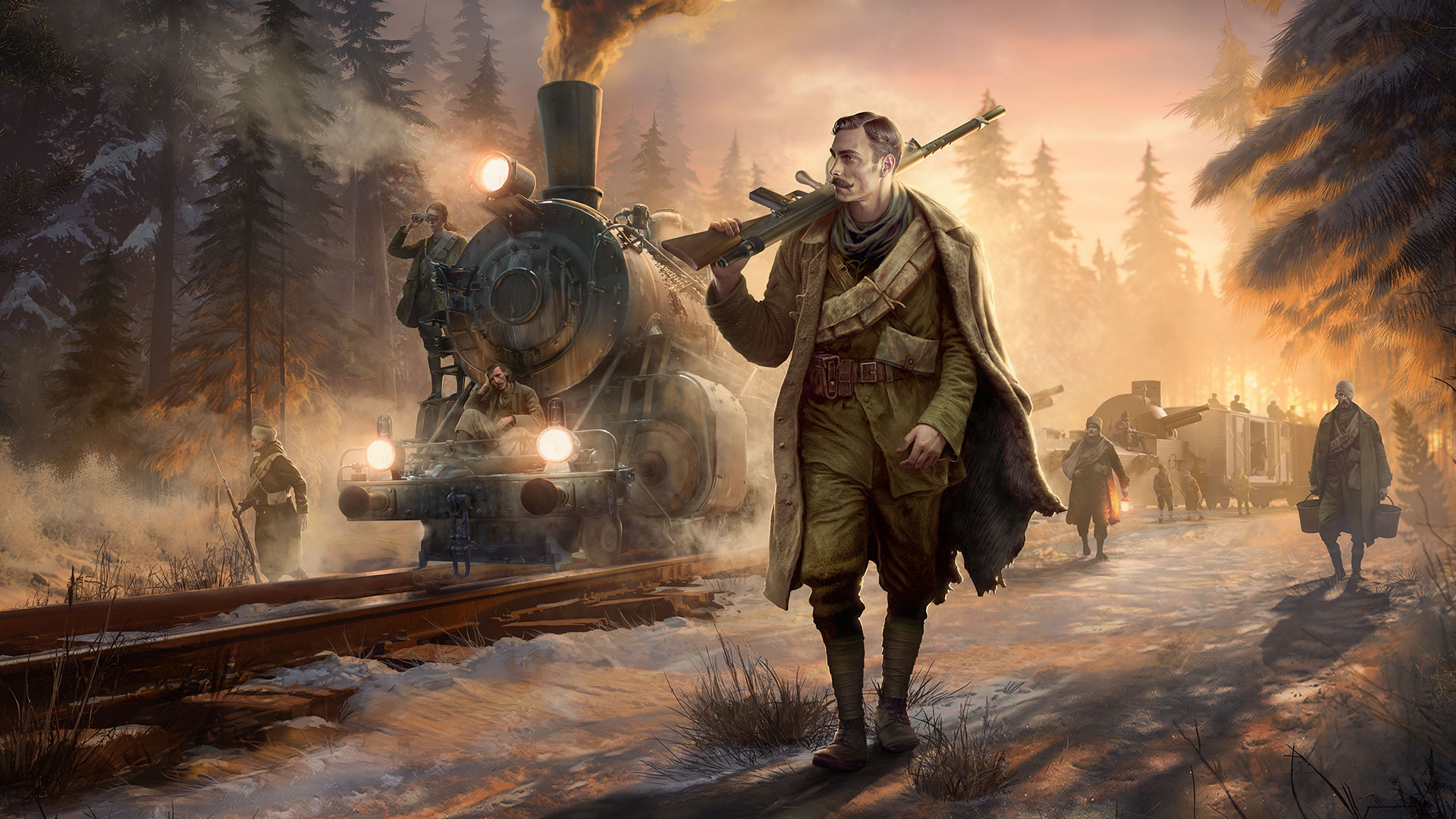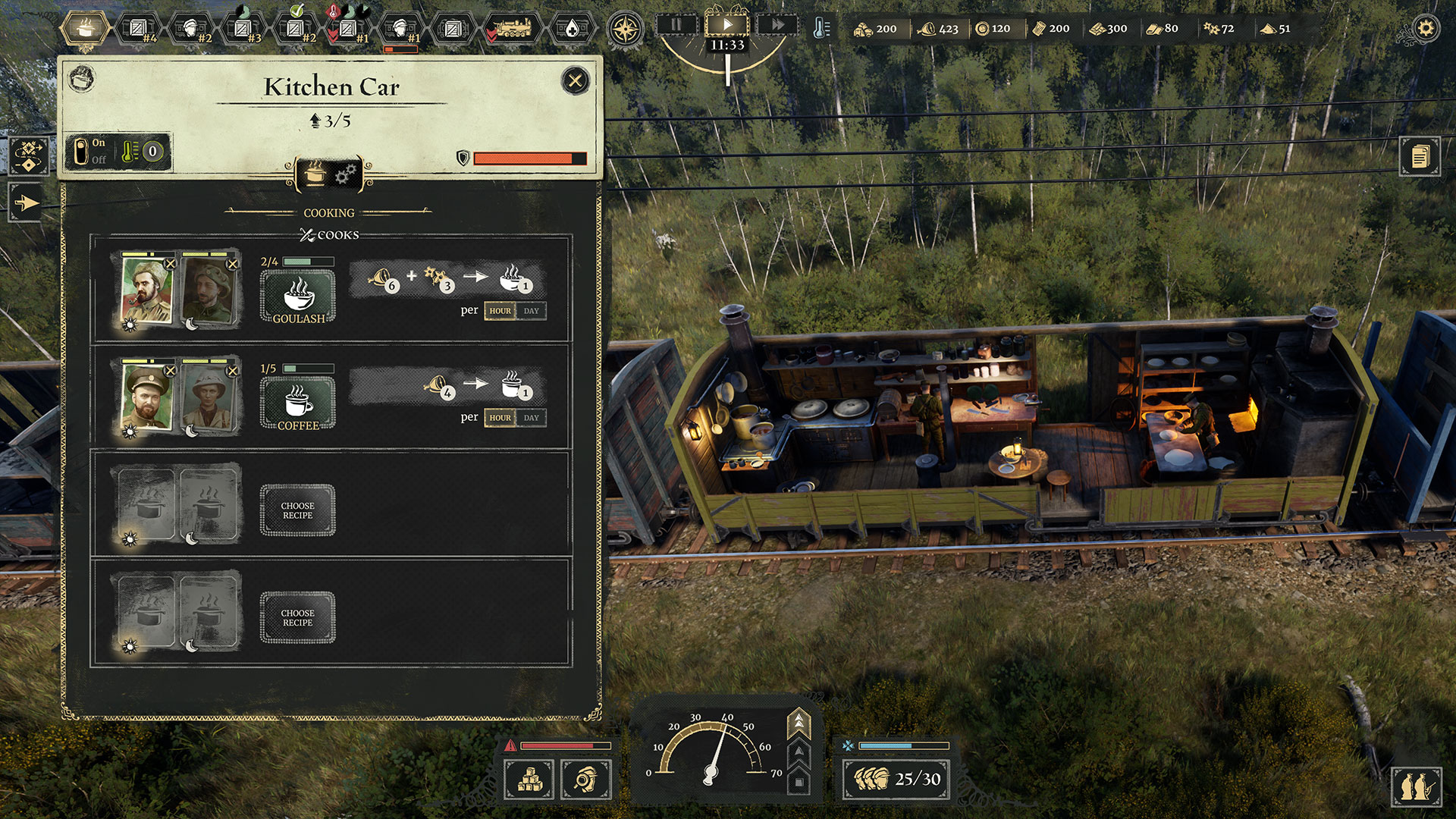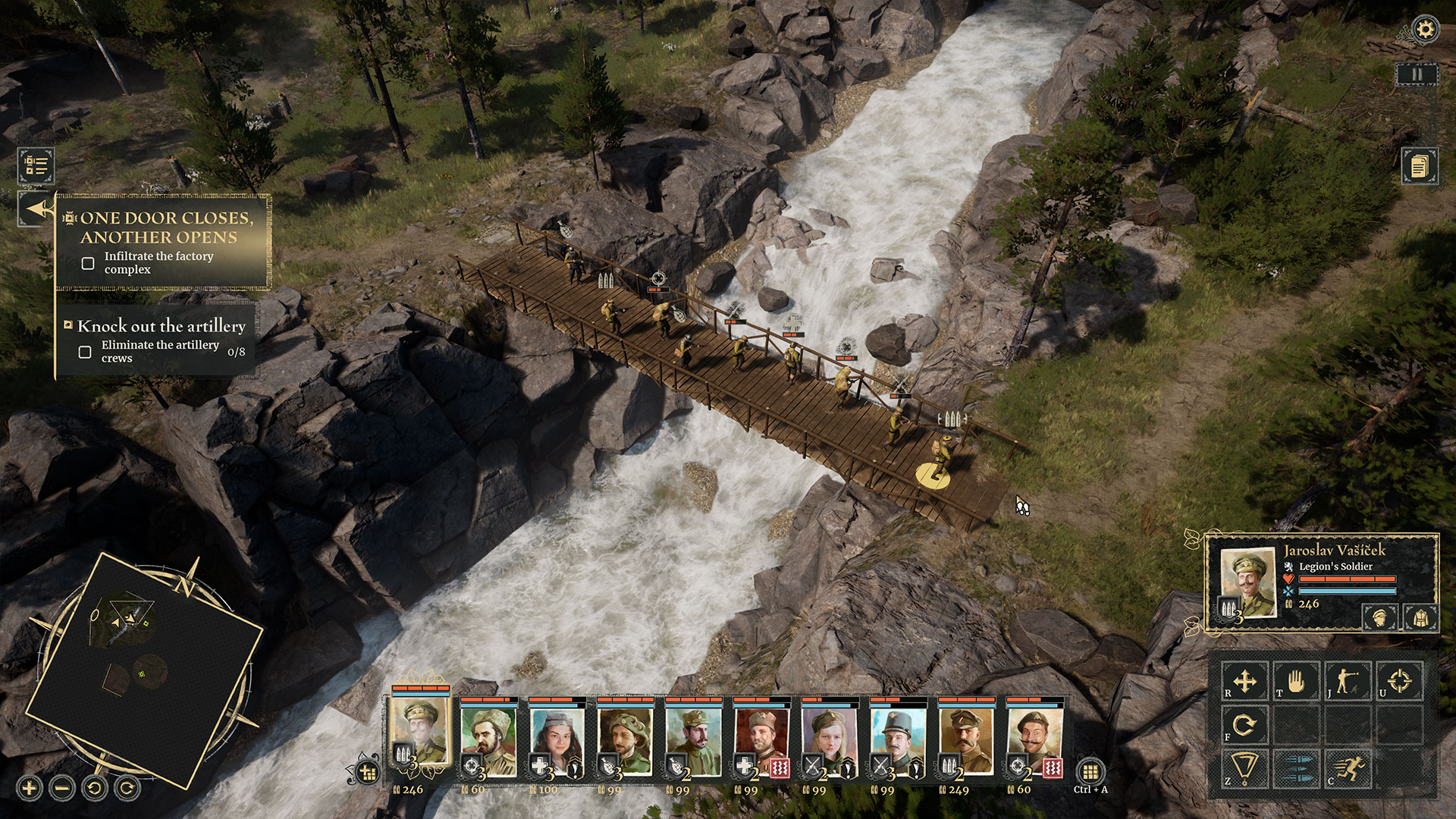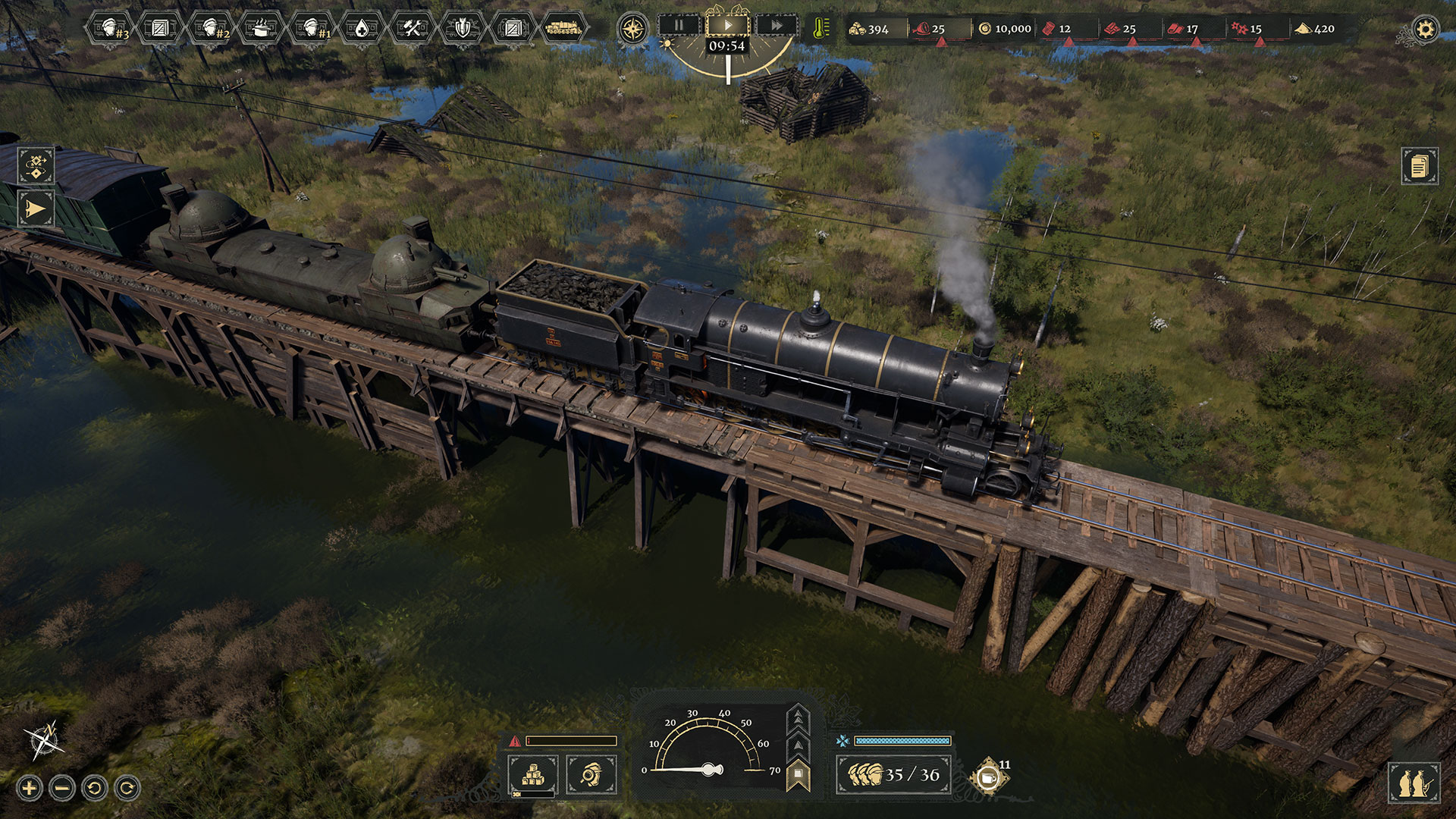
Last Train Home follows a legion of Czechoslovakian soldiers trapped on the wrong side of the Russian Civil War, trying to ride an armored locomotive all the way to Vladivostok. The train is their only opportunity to return home, and your decisions on the isometric battlefield will determine how many of them make it back. For fans of This War of Mine, Company of Heroes, and Arma, Last Train Home may be your next fixation.
The story picks up following the 1917 Russian Revolution when the Bolshevik Red Army fought the anti-Bolshevik White Army to control the country. Lasting four years, 10 million people died in the Russian Civil War, and the chaos displaced many more. It's your job to thread a train of weary troops through this maelstrom.
Your journey is half real-time strategy and half management game, with battles resembling missions in Company of Heroes and the time between spent checking on the status of your troops and assigning them to work in different carriages. It's not unlike Fallout Shelter.
That management side of Last Train Home is critical; maintaining an armored train with what remains of your allies as it chugs along the Trans-Siberian Railway is not an endeavor any of your soldiers is predisposed to. You need to assign your soldiers to different tasks in the carriages, and thanks to their varied beliefs, some step up to the plate more effectively than others.
"The soldiers have diverse opinions based on their individual experiences, which are reflected in their beliefs," managing director of Ashborne Games Petr Kolář says. "Players are faced with difficult decisions and must confront the consequences. For instance, choosing an option that is unfavorable to supporters of the monarchy may result in a decrease in morale. On the other hand, the same option might gain the respect of religious crew members."

As you travel across the country, your soldiers learn to adapt to their new home, picking up skills like the Herbalist and Hunter traits. These allow the troops to forage for food in the surrounding environment, which is necessary as you encounter instances of "war communism," where the Bolshevists took food from impoverished villages to fuel their war against the Whites. Throughout Last Train Home's campaign, you'll see the history that played out in the brutal civil war.
"Our primary focus was on the Czechoslovak Legion," Kolář says. "This means that the most interesting stories revolved around them, and we made efforts to incorporate those stories into our game. For example, there is a story of a couple of soldiers who survived the gruesome journey only to encounter sharks on the beaches of the Pacific Ocean long after they had safely left Russia."
When your train must stop, and you push into battle against one of the ruthless factions, the action switches to an isometric perspective. These skirmishes play out in real time and have an almost cinematic quality. Soldiers advancing at night are lit only by the infrequent flashes from their weapon muzzles, biting winds whipping their thin coats, and tanks leaving deep treads in the snow.

While missions may have a primary objective—killing an enemy commander, for instance—you will often have multiple optional objectives you can push on to complete. In one mission I'm shown, I must construct a bridge for the train to continue on its journey, but I can also separate from the track and help a nearby village hammered by mortars. There are rewards for success, but the extra objective might cost me additional injuries and deaths.
The fighting can take more than a physical toll, too. "Some soldiers may handle the situations better [but] everyone suffers in some way," Kolář says. "Depression is a more common and milder effect, for example. However, we had to simplify the portrayal of mental health in our game systems, as a comprehensive representation would require a standalone game in itself."
Even then, if you're keen to play the game as a more straightforward real-time strategy game, you can adjust the impact of those statuses. "We provide players with ways to adjust their difficulty," Kolář says. "There are various details players can set - for example, if hunger affects soldiers in the train, or even a coefficient of damage enemies suffer from player soldiers."

Ashborne Games is willing to make those tweaks, simplifying the presentation of mental health and letting you adjust the difficulty because, while the conflict was real and the team had a lot of input and support from veterans and descendants of the Czechoslovak Legion, the journey is fictional. It lets your decisions decide how the final battle at Vladivostok will play out. "Different combinations of past successes result in a unique experience during the last stage of the game," Kolář says.
It also allowed the team to take some "artistic license," Kolář says, including female soldiers in your group. "The Czechoslovak Legion did not allow women to become soldiers." Although, this isn't a huge departure from reality, as Kolář explains. "We are aware that there were women on trains, and there is even evidence of their involvement in some of the fighting, despite not being formally recognized as Legionary members." And women did fight in both the First World War and on both sides of the Russian Civil War.
There's an opportunity for Last Train Home to shine a light on the underrepresented Czechoslovakian struggle in the First World War, inspired by real soldiers and civilians who suffered through one of the most devastating events to ever occur in Europe and Asia. This project is born of a passion for telling the personal stories of those who gave everything they had to protect their loved ones in the hope of returning home to them. It feels timely and should be one to follow in the coming months.







